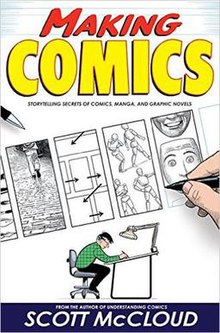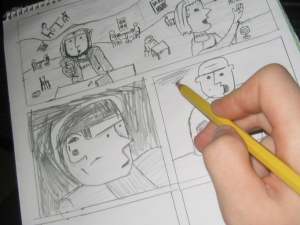
In comics studies, sequential art is a term proposed by comics artist Will Eisner to describe art forms that use images deployed in a specific order for the purpose of graphic storytelling or conveying information. The best-known example of sequential art is comics.

Comics is a medium used to express ideas with images, often combined with text or other visual information. It typically takes the form of a sequence of panels of images. Textual devices such as speech balloons, captions, and onomatopoeia can indicate dialogue, narration, sound effects, or other information. There is no consensus among theorists and historians on a definition of comics; some emphasize the combination of images and text, some sequentiality or other image relations, and others historical aspects such as mass reproduction or the use of recurring characters. Cartooning and other forms of illustration are the most common image-making means in comics; fumetti is a form that uses photographic images. Common forms include comic strips, editorial and gag cartoons, and comic books. Since the late 20th century, bound volumes such as graphic novels, comic albums, and tankōbon have become increasingly common, while online webcomics have proliferated in the 21st century.
Webcomics are comics published on the internet, such as on a website or a mobile app. While many webcomics are published exclusively online, others are also published in magazines, newspapers, or comic books.

Scott McCloud is an American cartoonist and comics theorist. He is best known for his non-fiction books about comics: Understanding Comics (1993), Reinventing Comics (2000), and Making Comics (2006), all of which also use the medium of comics.
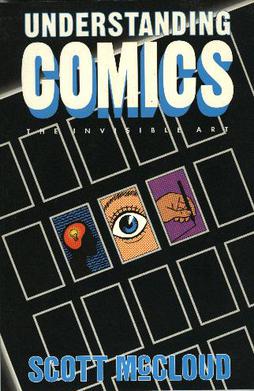
Understanding Comics: The Invisible Art is a 1993 non-fiction work of comics by American cartoonist Scott McCloud. It explores formal aspects of comics, the historical development of the medium, its fundamental vocabulary, and various ways in which these elements have been used. It expounds theoretical ideas about comics as an art form and medium of communication, and is itself written in comic book form.

Comics and Sequential Art is a book by American cartoonist Will Eisner that analyzes the comics medium, published in 1985 and revised in 1990. It is based on a series of essays that appeared in The Spirit magazine, themselves based on Eisner's experience teaching a course on comics at the School of Visual Arts. It is not presented as a teaching guide, however, but as a series of demonstrations of principles and methods. A 1990 expanded edition of the book includes short sections on the print process and the use of computers in comics. Eisner followed with a companion volume, Graphic Storytelling and Visual Narrative, in 1996.
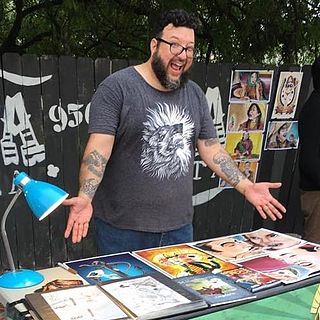
Cayetano 'Cat' Garza is a comic artist, cartoonist, illustrator, and musician in the United States. He is best known for his experiments with webcomics.

Patrick Sean Farley is a freelance illustrator and Web page designer. Known as a pioneer of webcomics as a medium, Farley works out of Oakland, California.
A 24-hour comic is a 24-page comic book written, drawn, and completed in 24 hours. Cartoonist Scott McCloud came up with the challenge in 1990 as a creative exercise for himself and fellow comics artist Stephen R. Bissette. Beginning in 2004, writer Nat Gertler helped popularize the form by organizing annual 24 Hour Comics Days, which now take place regularly in the United States and many other countries worldwide.
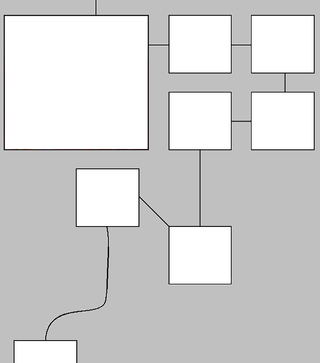
The infinite canvas is the feeling of available space for a webcomic on the World Wide Web relative to paper. The term was introduced by Scott McCloud in his 2000 book Reinventing Comics, which supposes a web page can grow as large as needed. This infinite canvas gives infinite storytelling features and creators more freedom in how they present their artwork.

Joost Swarte is a Dutch cartoonist and graphic designer. He is best known for his ligne claire or clear line style of drawing, a term he coined.

Nowhere Girl is an adult fiction webcomic by Justine Shaw, about a "college student who feels like an outsider in her own life, finding her place in the world and coming to terms with her sexuality". It is named after a song written by British futurist band B-Movie. Since its start in 2001, Nowhere Girl has won several awards. However, the comic has been retired in 2010.

Reinventing Comics: How Imagination and Technology Are Revolutionizing an Art Form (2000) is a book written by comic book writer and artist Scott McCloud. It is a thematic sequel to his critically acclaimed Understanding Comics, and was followed by Making Comics.
The use of comics in education is based on the concept of creating engagement and motivation for students.

The Billy Ireland Cartoon Library & Museum is a research library of American cartoons and comic art affiliated with the Ohio State University library system in Columbus, Ohio. Formerly known as the Cartoon Research Library and the Cartoon Library & Museum, it holds the world's largest and most comprehensive academic research facility documenting and displaying original and printed comic strips, editorial cartoons, and cartoon art. The museum is named after the Ohio cartoonist Billy Ireland.
Comics studies is an academic field that focuses on comics and sequential art. Although comics and graphic novels have been generally dismissed as less relevant pop culture texts, scholars in fields such as semiotics, aesthetics, sociology, composition studies and cultural studies are now re-considering comics and graphic novels as complex texts deserving of serious scholarly study.

Comics journalism is a form of journalism that covers news or nonfiction events using the framework of comics, a combination of words and drawn images. Typically, sources are actual people featured in each story, and word balloons are actual quotes. The term "comics journalism" was coined by one of its most notable practitioners, Joe Sacco. Other terms for the practice include "graphic journalism," "comic strip journalism", "cartoon journalism", "cartoon reporting", "comics reportage", "journalistic comics", and "sketchbook reports".

How to Draw Comics the Marvel Way is a book by Stan Lee and John Buscema. The book teaches the aspiring comic book artist how to draw and create comic books. The examples are from Marvel Comics and Buscema artwork. It was first published in 1978 by Marvel Fireside Books and has been reprinted regularly. The book created a generation of cartoonists who learned there was a "Marvel way to draw and a wrong way to draw". It is considered "one of the best instruction books on creating comics ever produced".
Comics has developed specialized terminology. Several attempts have been made to formalize and define the terminology of comics by authors such as Will Eisner, Scott McCloud, R. C. Harvey and Dylan Horrocks. Much of the terminology in English is under dispute, so this page will list and describe the most common terms used in comics.
